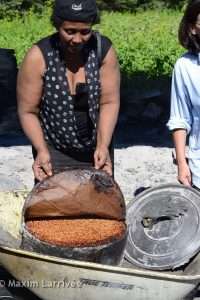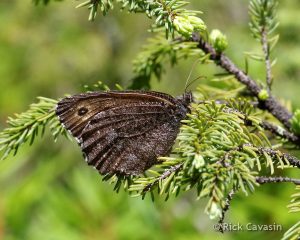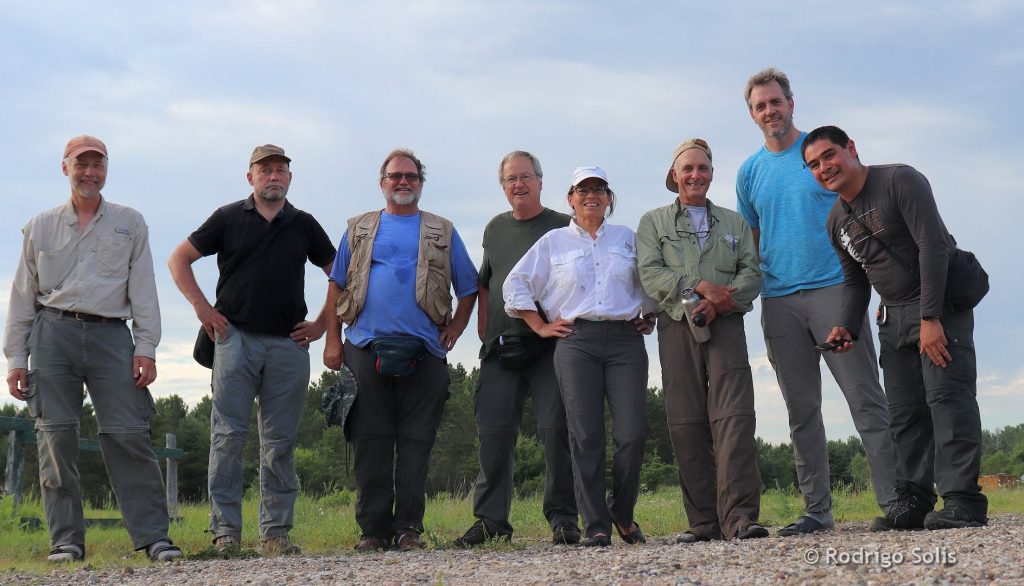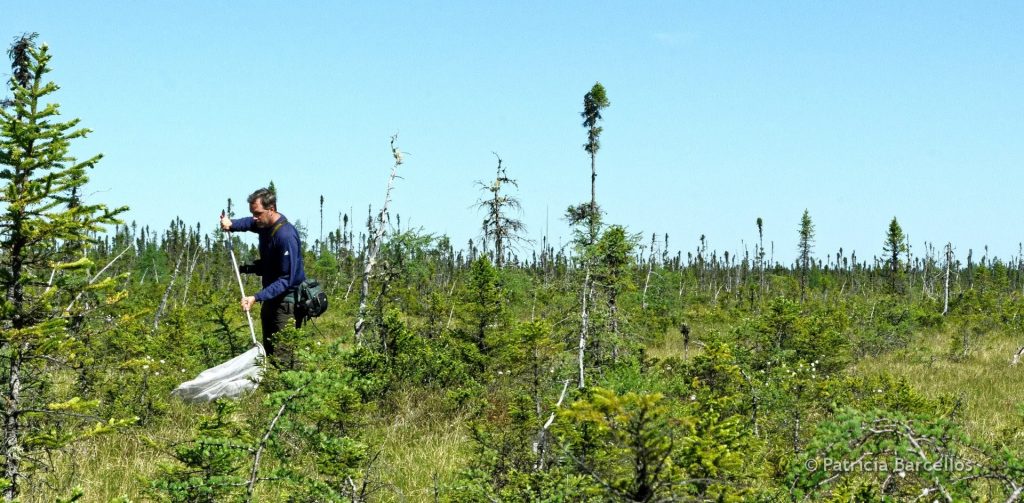Expedition James Bay 2018
On June 19, 2015, five intrepid lepidopterists – Jacques Larrivée, Chris Schmidt, Rick Cavasin, Peter Hall and Max Larrivée – set out to explore the east side of James Bay in Quebec and identify the bogs to be monitored along a 10 degree latitudinal transect. Fast-forward to 2018 and this time, as a pre-trip to the LepSoc meeting in Ottawa, a new team of entomologists with a varied range of expertise, skill, and interests was put together to follow on the steps of that first 2015 expedition. Maxim Larivée, Rick Cavasin, Pierre de Tonnancour, Steven Daniel, Mark Walker, Toomas Tammaru, Patricia Barcellos, and Rodrigo Solis-Sosa met in Ottawa on July 3rd, 2018 and set out for an unforgettable experience.
This time, we had in the group not only specialists in butterflies, but also in moths, flora, dragonflies, weevils, beetles, photography, and a very lucky quite unexperienced conservationist working with the monarch butterfly with a lot of enthusiasm to learn (myself). Adding more diversity to the group, we had a good representation of nationalities including Canada, United States, Mexico, Brazil and even Estonia. Having such a diverse group enriched the experience to a whole new level, teaching us that the environment is even more fascinating when conceived as a whole.
The objectives of this trip were many fold. First, to continue with the long term latitudinal transect study that has been an ongoing effort and given clear evidence of shifts in phenology of butterflies (e.g. days of appearance) due to climate change; Climate in this region has warmed by nearly 2.5C over the last 25 years. Also, we wanted to observe and collect species, not only of butterflies and moths, but spiders, dragonflies, and beetles as well. Finally, we collected many White Admirals for an ongoing research project that aims to document a correlation between wingspan and latitude (the farther north you go, perhaps the smaller they are). Have you noticed this on your trips for other species?
 The trip started with an obligated stop at “La Binerie” in Kazabazua, a few kilometers north of Gatineau, where we had our first chance to warm up our netting and photography skills with plenty of skippers (European, Peck’s, Dun and Long Dash), a few Northern Crescents, one Clouded Sulphur, one unidentified fritillary, and our first White Admiral of the trip. Besides our good warm up netting, we were delighted by the sand-cooked beans, a speciality of “La Binerie”. From there, we had a good number of stops along the way, mainly at bogs along Highways 117 and 113. One thing that I learned that day is that a 7-hour drive can easily turn into a 12-hour drive when driving with a car full of excited lepidopterists, but I also learned that the trip can be 100 times more interesting as well.
The trip started with an obligated stop at “La Binerie” in Kazabazua, a few kilometers north of Gatineau, where we had our first chance to warm up our netting and photography skills with plenty of skippers (European, Peck’s, Dun and Long Dash), a few Northern Crescents, one Clouded Sulphur, one unidentified fritillary, and our first White Admiral of the trip. Besides our good warm up netting, we were delighted by the sand-cooked beans, a speciality of “La Binerie”. From there, we had a good number of stops along the way, mainly at bogs along Highways 117 and 113. One thing that I learned that day is that a 7-hour drive can easily turn into a 12-hour drive when driving with a car full of excited lepidopterists, but I also learned that the trip can be 100 times more interesting as well.
After an almost 12-hour drive from Montreal, we arrived at Matagami, a small mining community halfway to Radisson (our final destination) and where we stayed overnight. We had a quick meal, and then, contrary to the logic of any ‘normal’ person who would just go to sleep after such a long day, we went out to a ridge nearby and set out the moth sheets and traps! It was a great night for mothing, just a few drops of rain, no moon, and lots of action. We had a new piece of equipment for mothing which I highly recommend to any person interested on this activity, an LED lamp specially designed for attracting moths called LepiLED. It was a game changer in terms of portability in comparison to normal mercury vapor lamps and other similar gadgets. One of the highlights of the night, was a beautiful Platarctia pathenos (St. Lawrence Tiger Moth).
The next day we travelled the remainder of the James Bay Highway until reaching Radisson, Quebec. This highway is the northernmost paved road in eastern North America, reaching 54 degrees north latitude. We kept expanding our list of sightings considerably during that day. In Radisson, we stayed at the Ecological Research Station run by the Center for Nordic Studies out of Laval University in Quebec City, which we turned into our headquarters for the next four days. From there we explored the region in every cardinal direction in search of northern butterflies specific to those latitudes.
The landscape around James Bay is basically Taiga, with little tree coverage mostly composed of Black Spruce, Tamarack, and a few Jack Pine. The rest of the landscape is mainly covered with a rich mix of lichen, moss and small plants such as cotton grass, sedges, Labrador tea, yellow pond lily, cattail, water horsetail, ground juniper; just to name a few. A remarkable prize for most of us was the chance of photographing and capturing lots of Taiga Alpine, a new one for most of our collections. Our Expedition Leader, Maxim Larrivée, has plenty of experience on identifying those plants and how each butterfly species uses them. He took us to places with the promise of finding particular species and he always delivered. Based on that, we learned that the most important way to find a specific butterfly, is to find their host plant.
On our third day at James Bay we finally reached the coast at Longue Pointe. This place, butterflies aside, was a delight for the eyes. A salt marsh filled with rocky outcrops that reach up to the edge of a calm beach; you can literally see Nunavut from here. This place was one of the crown jewels of our expedition, so much so that we returned the very next day and spent most of it there. We captured what it seemed to be a variation of Pieris angelika (species only recorded in the Yukon, northwestern Northwest Territories, northwestern British Columbia, and Alaska), there were hundreds of these butterflies flying around, which reflects that they’re successfully breeding here. Another exciting finding was what appeared to be the southernmost population of Oeneis melissa (Melissa Arctic) ever recorded at low elevations. We saw them in numbers that not one of us had ever seen before. In short, Longue Pointe is an amazing place to go to and explore, however, as one of our colleagues found out, be careful wandering into the salt marshes, it can literally suck you down to the chest and you’ll lose at least your boots!
The time came to make our way back to Ottawa, not without making a good number of stops along the way to keep expanding our already long list of species. The results of the expedition was more than 5,000 kilometres on the road, thousands of butterfly and moth photographs, more than 300 eButterfly observations of 40 different species from nearly 70 checklists, the discovery of a new populations of Melissa Arctic and an unidentified species of Pieris closely related to Pieris angelika, numerous lepidoptera specimens for the collections at the Canadian National Collection of Insects in Ottawa and the Montreal Insectarium. Oh, and mustn’t forget the many tumbles into frigid bog waters, the endless horse fly, deer fly, black fly and mosquito bites, and laughs well into the evenings over late night beverages and the moth sheet and, lastly, this lingering feeling of endless wilderness and space awaiting more discoveries.
Check out more photos of the landscape the the butterflies compiled by the team.


